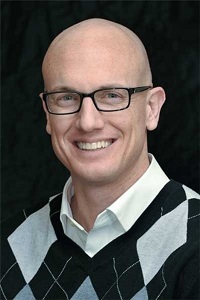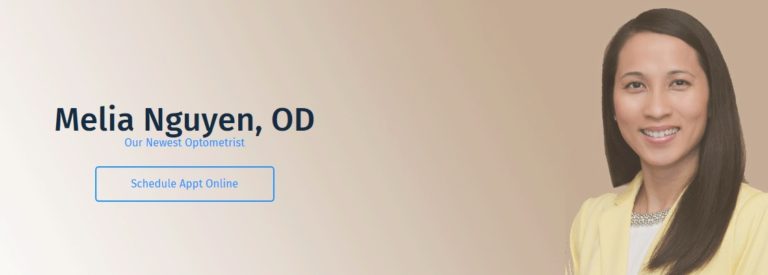
You want to create greater access to care for patients, and you want to grow your practice. Those two goals can be achieved by hiring an associate OD, if the time is right for you financially, and if you know exactly what you want the new doctor to add to the services you already provide. My practice partner and I recently hired an additional associate to add to the two we already had on staff to create a five-OD practice. Here are key lessons I’ve learned about the right time to add an associate, and how to do it so the new hire enhances care and revenues.
Financial Tipping Point
We were at 80 percent capacity when we decided to add another associate. If you wait longer before adding another doctor, many current and prospective patients will look for another place to receive care, rather than wait until a doctor becomes available at your practice.
We have 337 exam slots each week. Some 270 of those were full 1-2 weeks out with many weeks fuller than that. The capacity problem we had related to patient-preferred times. We typically will have mid-morning times that remain open for the doctors. Our capacity fluctuates according to time of year, so during the summer months we were at 100 percent+ capacity, whereas some months were 80 percent.
I look at associate ODs as long-term practice investments. Associates are an upfront expense that are like an investment in stock. When you buy a stock you typically don’t get immediate cash returns. However, when you have a practice that’s already staffed, with fixed overhead expenses, adding an associate usually does not add proportional overhead costs.
We put a doctor on salary for the first year, and keep track of their percentage of production. Once they “pay for themselves,” we talk to them about transitioning to being paid based on production only. Our associates have found production-based practice to be the most rewarding both personally and financially. As an owner, I also like to see the doctors have buy-in, and feel like their prescribing habits and clinical care make a difference not only in the care they give, but also in the practice’s revenue per patient.
Dr. Fleming’s practice web site announces a new associate, Melia Nguyen, OD. Dr. Fleming says to carefully calculate your finances, and capacity for seeing patients, before adding another doctor to the practice.
Is This a Person We Want to Work With?
Bill Hybels, founder and pastor of Willow Creek Community Church, has written in his many leadership books about the importance of evaluating for character, chemistry and competency when hiring a new employee. When we look for a new doctor, the most important thing we think about is their character. This is what most helps us determine if the doctor is capable of serving our patients the way we want them to be served, and whether they are a person we would want to interact with everyday as colleagues.
Our practice culture emphasizes the importance of faith and family, so we look for people to add to the practice who also value those things. In the hiring interviews, we listen for evidence that the doctor prioritizes their family, and see it as a strength if the prospective associate notes involvement with a church or other house of worship.
Prepare to Serve a Diverse Community
The U.S. is becoming more diverse with communities across the country experiencing influxes of people with Hispanic and Asian backgrounds, among other immigrant groups. That means that it’s advantageous for our practices to reflect that diversity.
In addition to being impressed with her character and competency as a doctor, we consider the new associate we hired, Melia Nguyen, OD, to have a background that will help us serve our changing community. As an immigrant, who came to the U.S. with her family when she was 12, Dr. Nguyen understands the perspective of other recent immigrants, and can guide us in growing our practice’s reach into those communities.
Don’t Keep Your Search for An Associate a Secret
The more time that you have when looking for an associate the better. I think too many practice owners play a secret game in not telling anyone they’re looking for an associate until they’re about ready to hire. We almost made this mistake, and I would encourage those who have a 2-5 year plan of bringing in an associate that they begin telling people well in advance.
Think About Long-Term Goal: Will This Person Eventually Become a Partner?
We hire our associates with the idea that they will eventually be offered a place on our board of directors as an owner. It is not a prerequisite for an associate to have the desire to be an owner, but we like the mentality of an eventual owner-OD because it gives the doctor a greater personal stake in the success of the practice.
My partner in the practice, Jeff Yarrow, OD, and I are in the process of creating an organizational structure that will allow for the practice positions of CEO, CFO, and we will have a board of directors. Each owner will have a seat, and equal standing, on the board of directors.
Get to Know Prospective Associates
The hiring process we use to add an associate OD is similar to the process used when hiring support staff, but with a longer timeline, and more in-depth interviews, including video teleconferencing interviews, or video “chats.” The first step was a video chat with just myself and potential candidates, which served as an initial screening. From there, we narrowed the pool of applicants, and then had the other doctors in the practice participate in a longer video chat with the potential associates.
Prospective support staff are usually based locally, and so, can come into the office for a first round of interviews. Potential associates often are not based nearby, so the video chats were an important tool in getting to know them. It worked to our advantage in giving us a view of the doctor at home, or in the office where they currently practice. That “natural setting” environment gave us a glimpse into the person’s life. For example, during one of our interviews, an applicant’s dog ran into the picture. Seeing how she handled that situation gave us a sense of how she manages the unexpected. Her calm, graceful response allowed us to see another strength of her personality.
Use In-Person Interviews & Personality Assessments
Once we determined that an OD was a finalist to become an associate, we asked them to visit our office in person, and asked for references. We depended a lot on references, and time communicating with those references, to determine the clinical competency and character of the individual. The interviewee coming to our practice and interacting with our staff and doctors then allowed us to see if they would have good chemistry with us.
We also use the DiSC personality assessment to determine if a doctor will be a good fit for our practice culture, given the personalities of the other doctors and staff, and how we like to care for patients and conduct business. We want to know that the new associate OD would be comfortable with an open culture in which we regularly welcome, and solicit, feedback, and work together cooperatively to better the practice.

CHAD FLEMING, OD, FAAO,
Chad Fleming, OD, FAAO, is a partner with Wichita Optometry, P. A. in Wichita, Kan. To contact: optometryceo@gmail.com








